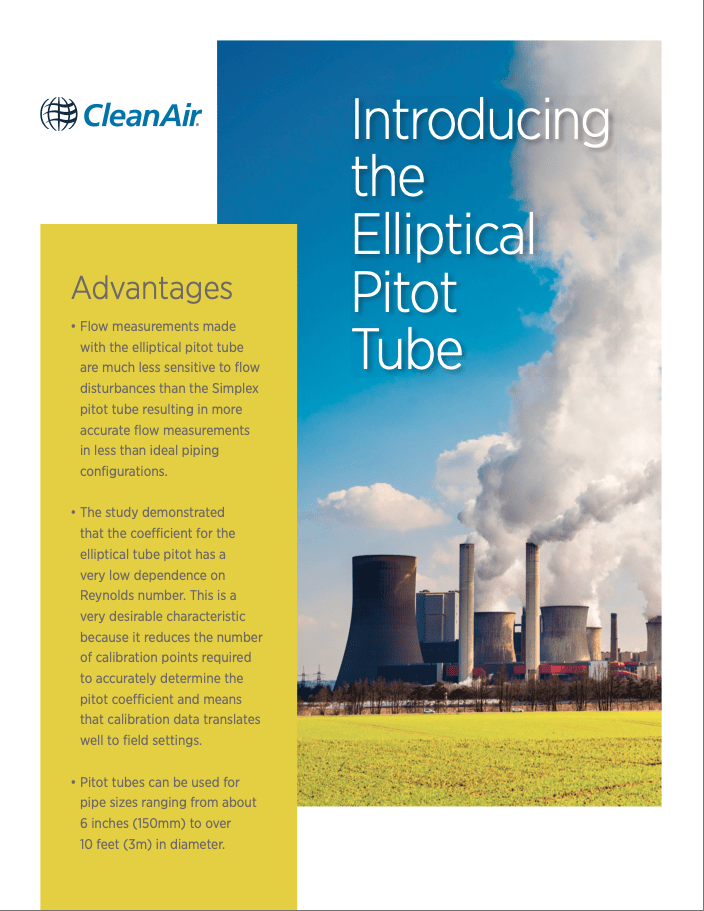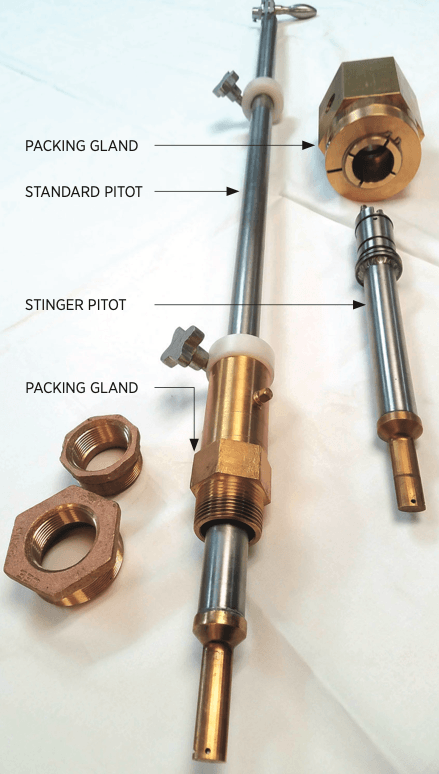Elliptical Pitot Tube
Introducing the Elliptical Pitot Tube
Advantages
- Flow measurements made with the elliptical pitot tube are much less sensitive to flow disturbances than the Simplex pitot tube resulting in more accurate flow measurements in less than ideal piping configurations.
- The study demonstrated that the coefficient for the elliptical tube pitot has a
very low dependence on Reynolds number. This is a very desirable characteristic because it reduces the number of calibration points required to accurately determine the pitot coefficient and means that calibration data translates well to field settings. - Pitot tubes can be used for pipe sizes ranging from about 6 inches (150mm) to over 10 feet (3m) in diameter.
The Elliptical Pitot
Water flow rate is often a critical measurement for important power plant components including cooling towers, pumps, heat exchangers, and condensers. Since its inception in 1959, the Cooling Technology Institute (CTI) has used Simplex type pitot tubes for measurement of water flow rate. Although very accurate in piping configurations with well-developed velocity profiles, results from the Simplex were suspect in challenging flow situations.
In 2017, CleanAir presented the results of a research study investigating alternative pitot designs. The elliptical pitot design as illustrated in the picture above, was recommended by CleanAir and subsequently adopted by CTI and mandated for use in all CTI tests in July 2018. The new design provides the industry with significant improvements over the Simplex design.
CleanAir has refined the design and built a number of pitot tubes for internal test support and now offers the same designs for outside sale. Two types of pitot designs are available which both use the same elliptical sensing element. A “standard” pitot is a fixed length device with an outside shaft diameter of 1-inch (25mm). This pitot is commonly used for flow rate measurements in pipes up to about 48-inches (1200mm) in diameter.
A reinforced pitot uses the same sensing element, but this “stinger” design is inserted in a reinforced sheath for traversing larger pipes or used in applications with high fluid velocity.
Different pitot lengths are available and can be built to customer specification. Customer specifications for pitot length are often a function of targeted pipe size, portability and clearance at the measurement location.
Each pitot is equipped with co-joined static pressure ports which are connected in the elliptical tip. A tube transmits the co-joined static pressure while a second parallel tube transmits the impact pressure down the length of the tube or stinger.
Both pitot designs come with the appropriate packing gland which permits installation of the pitot through a valve while water is flowing through the pipe.
Differential pressure between the static and total pressure ports is commonly measured with an air-over-water manometer or a differential pressure transmitter.
CleanAir can also provide calibration services at a variety of flow and velocity settings subject to need.
For additional details or pricing visit our store at https://www.cleanair.com/product/elliptical-pitot-tube/.





